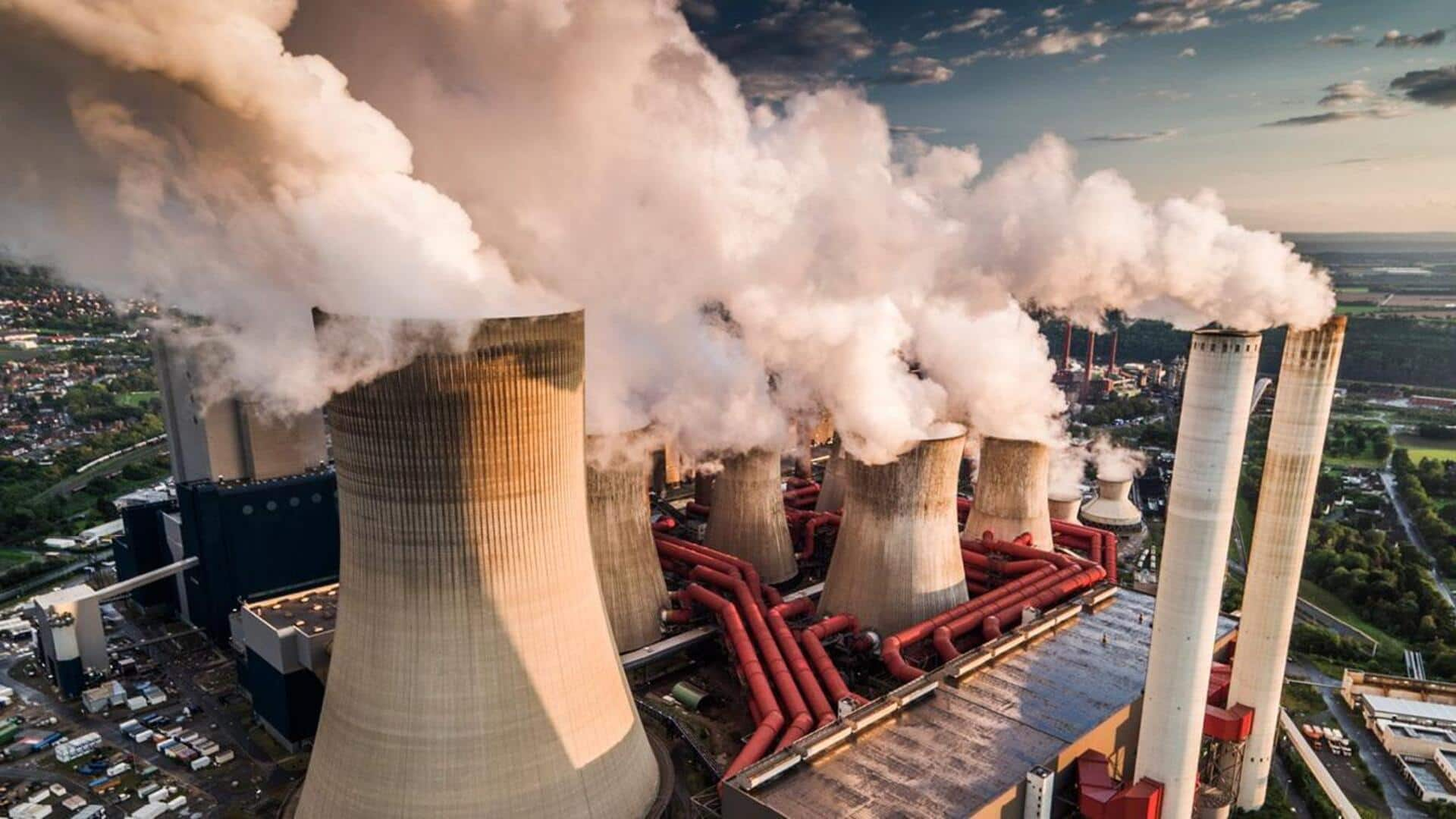
Scientists discover novel material that traps greenhouse gases
What's the story
Scientists from the UK and China have made a groundbreaking discovery by synthesizing a unique porous material capable of trapping potent greenhouse gases such as carbon dioxide (CO2) and others. This innovative material, unlike any other, is characterized by its distinctive molecular structure. The creation process involves aligning triangular prism building blocks into larger, symmetrical tetrahedral cages, resulting in an unprecedented molecular structure.
Characteristics
Unique material exhibits high greenhouse gas absorption
The novel material has demonstrated a remarkable ability to attract and retain greenhouse gases like CO2 due to its high concentration of polar molecules. It also shows excellent stability in water, a crucial feature for potential industrial applications in capturing carbon from wet or humid gas streams. Marc Little, the senior author of the study, emphasized the need for new porous materials to tackle significant societal challenges like capturing and storing greenhouse gases.
Efficiency
It shows high absorption rate for another potent greenhouse gas
In laboratory tests, the cage-like material also demonstrated a high absorption rate of sulfur hexafluoride (SF6), identified by the Intergovernmental Panel on Climate Change as the most potent greenhouse gas. CO2 persists in atmosphere for 5-200 years. However, SF6 can linger for around 800 to 3,200 years, giving it a global warming potential approximately 23,500 times that of CO2, over a 100-year period. Despite its lower atmospheric levels, SF6's extremely long lifetime makes it a significant contributor to global warming.
Potential
Discovery could enhance carbon removal strategies
Currently, carbon removal strategies are only eliminating about two billion tons per year out of an estimated requirement of around 20 billion tons to balance our carbon emissions. A mere 0.1% of carbon removal is attributed to new technologies such as direct air capture which employs porous materials to absorb CO2 from the air. This newly discovered material could potentially enhance direct air capture efficiency, decrease energy consumption, and avert the worst impacts of climate change.
Process
Creation of material involved complex self-assembly process
The creation of this intricate material was a challenging task, despite the precursor molecules technically assembling themselves, a process known as supramolecular self-assembly. To predict how their starter molecules would assemble into this new type of porous material, the researchers conducted simulations considering the geometry of potential precursor molecules, and the chemical stability and rigidity of the final product. Little and his team explained that optimal reaction conditions are often not intuitively obvious.